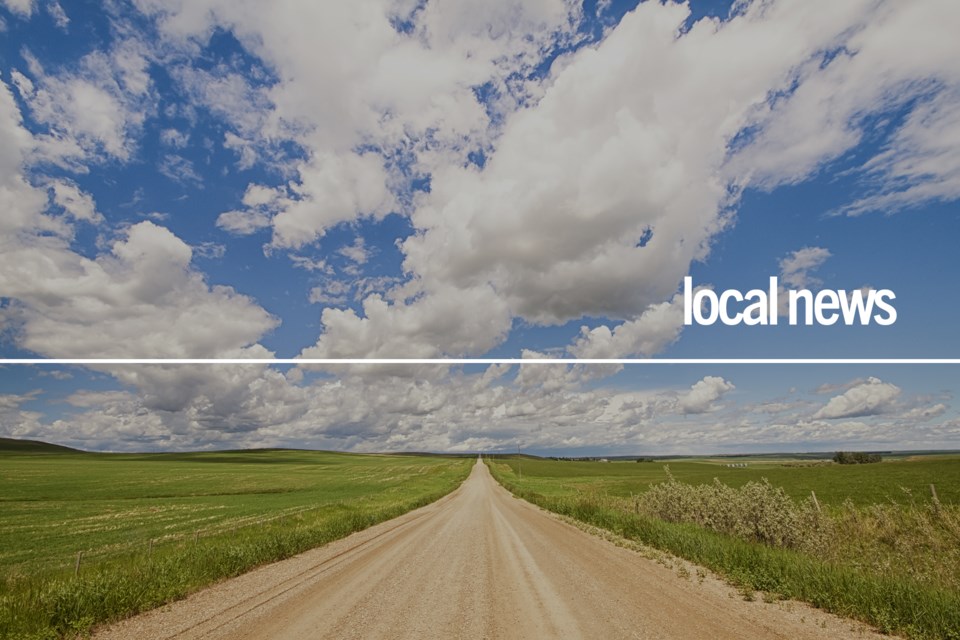LAKELAND - With the snow now mostly melted and warm weather in the forecast, farmers will be busy getting crops in the ground.
“Most, if not all, of the Alberta’s agricultural land is now snow free, but ‘green-up’ has been delayed due to cool temperatures,” according to the most recent Alberta Agriculture and Irrigation moisture update from April 27.
In the two weeks prior to the report, very “modest spring rains have fallen sporadically across many parts of the province but have yet to arrive across some parts of each of the four agricultural regions.”
In the northeast region, most of the area saw about five to 10 mm of rain reported, with more than 15mm in some areas. In the northwest and central regions, much less rain was reported, with less than 2mm reported in some areas.
“The Southern Region is fairing slightly better where upwards of 5 to 10 mm has fallen, increasing to over 15 mm along the Milk River Ridge and westwards towards the foothills. Most of the Peace Region has seen recent rains with at least 5 to 10 mm falling across much of the land,” reads the report.
A lack of spring run-off this year is causing some concern for cattle producers in the Lakeland, according to MD of Bonnyville general manager of Environmental & Protective Services.
“Overall moisture conditions starting out spring are good at this time with snow staying on the fields until the past 10 days,” he said on April 24.
“The concern right now for cattle producers was the lack of runoff to fill water reserves in dugouts for watering cattle in the summer,” added Janz. “We did go into last fall on the drier side and with little frost this winter the water just soaked in.”
In the MD of Bonnyville, producers were expected to be getting into the fields by the end of last week to harrow and start the pre-seeding routine.
“If weather conditions improve, farmers should be starting to seed by the second week in May. Soil temperature will be the deciding factor with the start of seeding,” noted Janz.
And with the forecast predicting temperatures above 20C this week, producers in the region will likely be very busy.
Looking ahead, Janz says as far as insects and disease in the 2023 growing season, clubroot remains a concern in the region.
“We are recommending good rotation, clubroot resistant variety of seed and proper sanitation of equipment,” said Janz.
And according to the provincial moisture report, it is simply too early to predict what lies ahead.
"Despite a dry start to the 2023 cropping season, it’s far too early to make predictions on what impact current moisture deficits will have on crop yields and pasture growth. Alberta’s wet season still lies ahead, typically being in full swing by late May and persisting through June," reads the report. "Generally, north of the TransCanada Highway July is also a relatively wet month. That being said, rain is needed now across most areas, particularly across the south were seeding activities are ramping up and especially province wide, for pasture and hay land."
Minister of Agriculture and Irrigation Nate Horner offered Alberta farmers a few encouraging words last week as he marked the beginning of the 2023 growing season.
"Alberta’s agriculture industry plays a critical role in our economy by providing food, creating jobs and contributing to our province's growth and prosperity,” he said, adding, “Despite facing new and complex challenges posed by climate change and shifting market conditions, Alberta’s producers have shown great resiliency and commitment to their work.”
Horner encourages all Albertans to support the agriculture industry in Alberta.
“I encourage all Albertans to support our agricultural industry by buying locally and choosing Alberta-grown products, and I urge all farmers to stay informed, stay safe and continue their vital work in feeding our province and beyond.”



